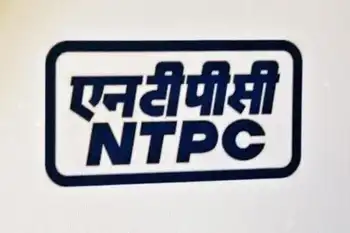Teething problems plague Indian solar
INDIA - From a lack of data and trained manpower to dealing with inexperienced investors, India's ambitious dream to boost solar power faces a host of problems that could slow plans to zoom production from near zero to 20 gigawatts by 2022.
Under its Solar Mission plan issued in 2009, India is to produce 1,300 megawatts MW of power by 2013, an additional supply of up to 10 gigawatts GW by 2017 and the rest by 2022 at an overall investment of about $70 billion.
Once implemented, the plan would see output equivalent to one-eighth of India's current installed power base, helping the world's third-worst carbon polluter limit reliance on coal and easing a power deficit that has crimped economic growth.
But, despite an encouraging start, several hurdles remain, clouding the possibilities of a sunshine sector that is seen as crucial to India's energy security plans, according to Debashish Majumdar, chairman and managing director of Indian Renewable Energy Development Agency.
"The Solar Mission has created tremendous interest in the solar field. There are project developers, manufacturers, contractors — they all want to get into this big market that has been created," Majumdar told Reuters in a recent interview.
"But there are roadblocks. The biggest problem is lack of data. If you set up a large hydro project, nobody would even think of shoveling the first spade of sand from the site unless there is 40 years of data.
"In the case of solar there is no primary data. There is a lot of secondary data from meteorological offices, NASA satellite studies. From all that you can do some sort of an analysis and come to a certain educated guess about what your generation is likely to be. What we don't have is a correlation with the actual ground-level data."
"That is going to make or break the project viability, especially because the project cost is very high," he added.
This means banks and financiers of solar projects remain hesitant, not least because the field is an emerging sector where levels of uncertainty and risks are seen as high.
While the sector remains a high-risk venture in India, the promise of first-mover advantage and attractive returns in the long term is drawing a mixed bag of investors, many of them either inexperienced or in the game to make a quick profit.
Under the Solar Mission, investors have to bid to build solar power plants and the winning bids are determined by the electricity tariff that they accept as viable. Such has been the interest, that the government has been flooded investment pledges for the first batch of projects.
With about 250-300 clear sunny days in a year, India's solar power reception is about 5,000 trillion kilowatt hour per year, meaning just 1 percent of India's land area can meet the country's entire electricity requirements until 2030.
Such potential holds huge attraction for firms such as Tata BP Solar, a joint venture between Tata Power and BP Plc's solar unit, BP Solar, and Bharat Heavy Electricals Ltd, a state-run power and engineering equipment firm, and Lanco Infratech.
"A whole lot of people have jumped into this taking this as the next big business opportunity in the country and they have jumped into this without any knowledge," Majumdar said.
"They are floundering around trying to find out which is the best thing they should do, where is the knowledge base, who are the experts, who is the consultant, who can give an accurate picture of what the issues are.
Such handicaps also come in the way of choosing the right technology, he said, a choice that has huge impact on project costs and the push to bring down the price of solar power.
While these are early days and solar's steep costs, much like that of nuclear power, are a deterrent, government policy seems to be on the right track, Majumdar said.
An Indian government panel has said renewables costs had to be brought down to near par with coal-based electricity, the cheaper form of energy in India, by 2020.
Coal, available in abundance in India, provides power at about 2 rupees US 4 cents a unit, compared to a kilowatt hour of solar power at a range of 11 to 12 rupees.
"What time will tell us is whether these policies are right, whether the assumptions behind these policies are good enough to make it work," he said.
India faces a 12 percent power shortfall during hours of peak consumption, according to figures from the federal Planning Commission, which charts the country's growth path.
The government has scaled down its target for the installation of new power generation capacity for the current five-year-plan, which ends in March 2012, to 62,000 MW from an initial estimate of 78,700 MW.
Which is why solar is a key area in the renewables sector. Renewables contribute just about 6 percent of India's total power mix.
"So why are we doing solar when the costs are so high? Because there is reasonable hope that costs are coming down and coming down quite dramatically," Majumdar said.
"Therefore, we get our feet wet today so that we are there when this thing really becomes the mainstay. But mainstay, when I use that word, will happen maybe many decades later but it is a process we need to go through today."
Related News

California's solar energy gains go up in wildfire smoke
LOS ANGELES - Smoke from California’s unprecedented wildfires was so bad that it cut a significant chunk of solar power production in the state. Solar power generation dropped off by nearly a third in early September as wildfires darkened the skies with smoke, according to the US Energy Information Administration.
Those fires create thick smoke, laden with particles that block sunlight both when they’re in the air and when they settle onto solar panels. In the first two weeks of September, soot and smoke caused solar-powered electricity generation to fall 30 percent compared to the July average, according to the California…




